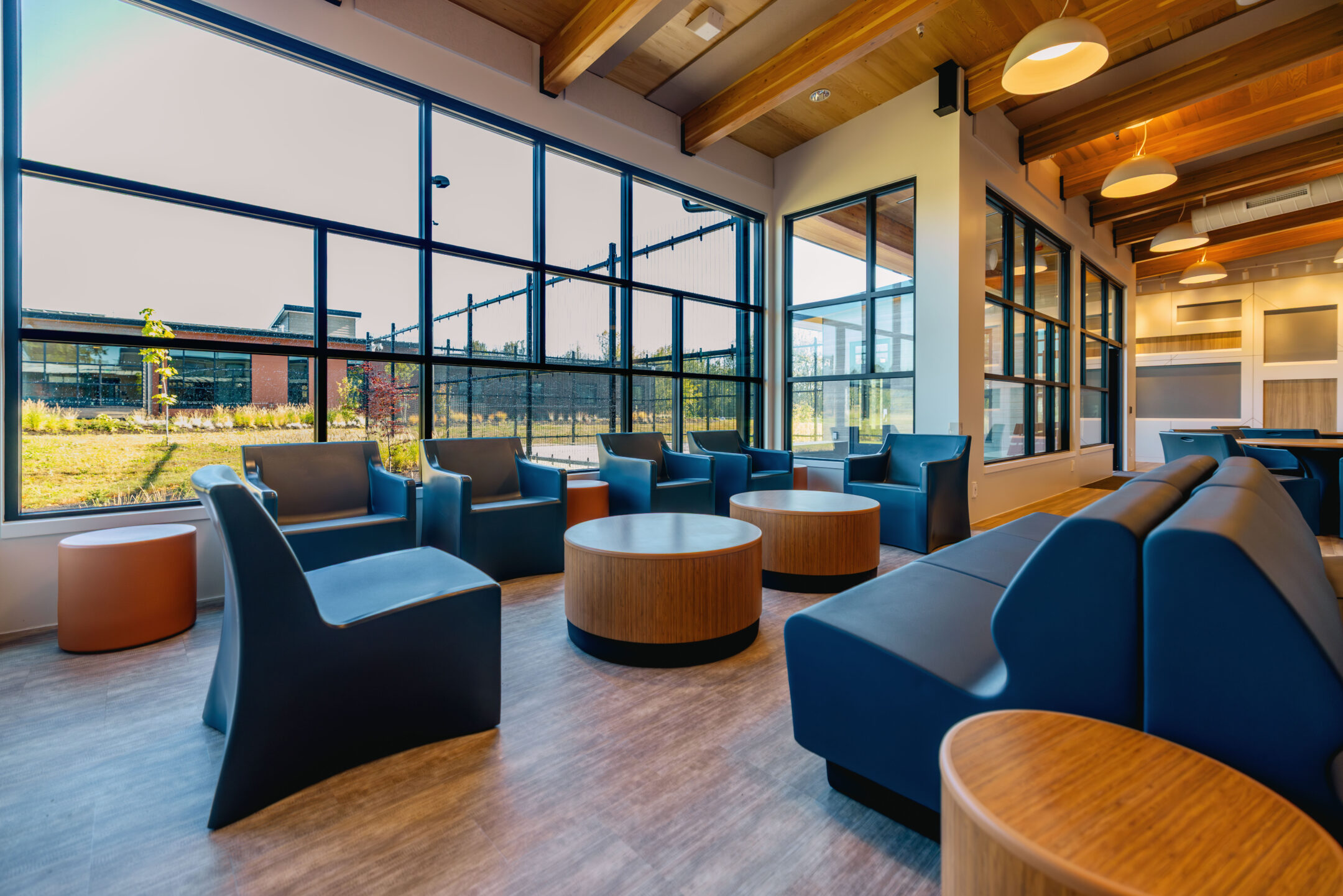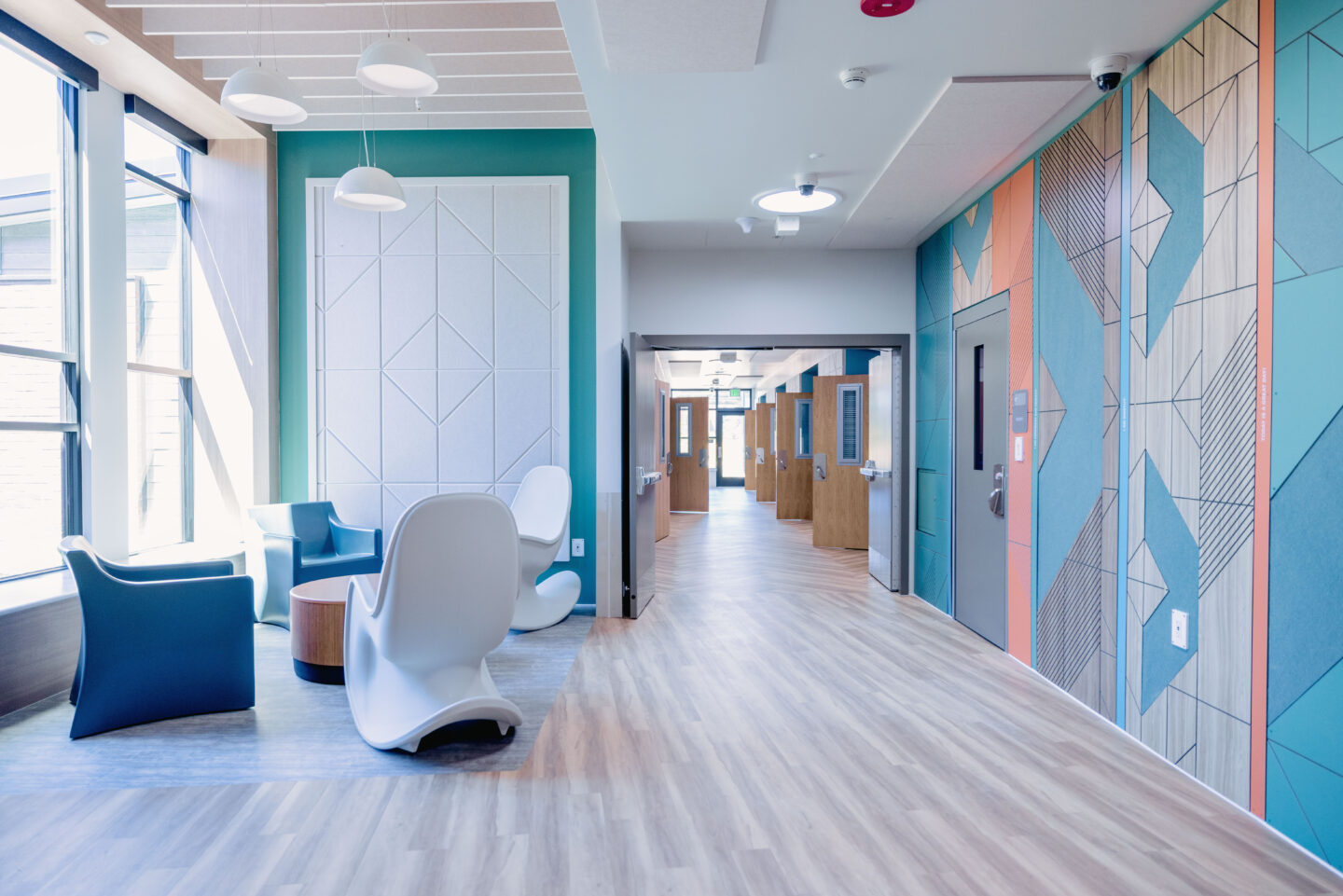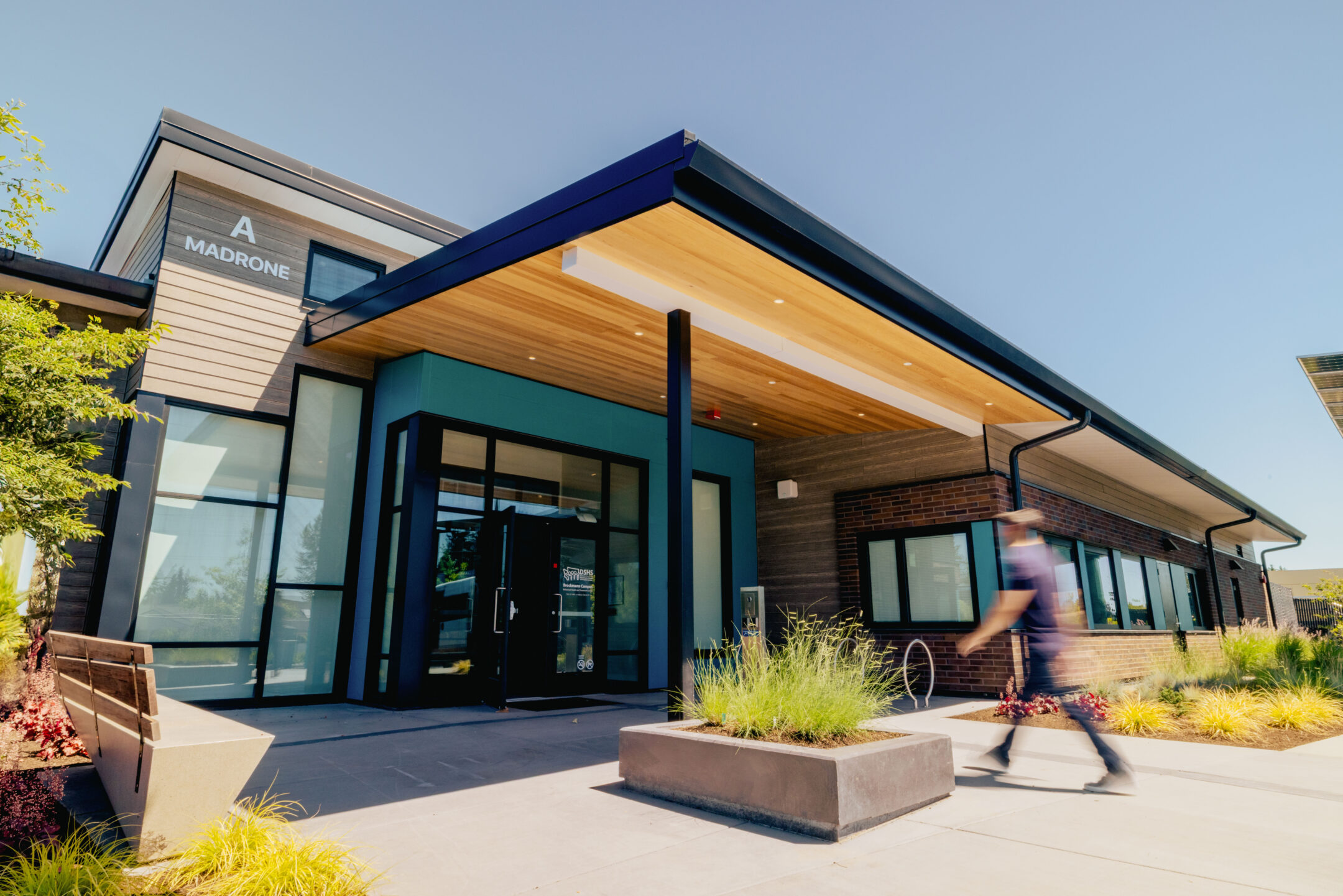Building a New Standard in Behavioral Healthcare
Clark County Brockmann Campus
Hoffman Construction worked in close partnership with the Washington State Department of Social and Health Services (DSHS) and BCRA Design to turn an ambitious vision into a functional, high-quality environment for recovery.
The completed 48-bed Residential Treatment Facility in Clark County represents Washington State’s shift toward smaller, community-based treatment centers that prioritize patient dignity, safety, and integration into the neighborhood. As one of five facilities planned for the Department of Social and Health Services, the Brockmann Campus was built using the state’s Behavioral Health prototype design, adapted to meet the specific needs of this site and community.
Delivered under the GC/CM method, the project consists of three separate 16-bed buildings arranged to support smaller care groups while maintaining strong connections to shared spaces. Every element, from anti-ligature features and strategic sightlines to material choices and landscaped courtyards was planned to create a secure, calm, and welcoming environment for both patients and staff. Designed for net-zero energy use, the facility reflects a commitment to long-term sustainability while providing cost-effective solutions that maximize community benefit.
Challenge
Building a secure, 48-bed behavioral health facility in an established neighborhood raised understandable questions from nearby residents. Concerns focused on safety, day-to-day operations, traffic, and how the facility would integrate into the surrounding community. These were valid points, neighbors wanted assurance that the project would protect both patient wellbeing and public safety while respecting the character of the area.
Solution
In direct partnership with the Washington State Department of Social and Health Services, our team made community trust a cornerstone of this project. From early planning through construction, Hoffman worked to provide visibility, address questions, and demonstrate the safeguards built into the facility.
Local law enforcement was routinely welcomed on site to review security measures, operational plans, and emergency protocols, adding a visible layer of reassurance for both the client and the community. Site placement, secure perimeter fencing, and landscaping were all refined to reduce visual impact, enhance safety, and integrate seamlessly with the neighborhood. By making openness, safety, and responsiveness part of daily work, the project team helped move the conversation from skepticism to shared ownership, earning two DSHS awards for outstanding community outreach and relationship building.


Empathetic Design for Optimal Recovery
Every design choice at Brockmann was guided by a trauma-informed, patient-centered approach. The campus integrates natural light, therapeutic outdoor spaces, and a mix of single and double occupancy rooms, fostering comfort, dignity, and connection. Flexible therapy areas and safe, accessible outdoor courtyards encourage movement, social interaction, and privacy as needed.
Campus and Community Spaces
Raising the Standard for Sustainable Healthcare
Designed with a net-zero energy target, the Brockmann Campus achieved Salmon Safe, LEED Gold and Net Zero Ready certifications.
Brockmann Campus isn’t just energy-efficient, it’s energy-contributing. Through rooftop solar arrays and strategic passive design, the facility generates as much electricity as it uses over the year. When production exceeds demand, clean energy is fed into Bonneville Power Administration’s grid, helping to power homes and businesses across the Pacific Northwest.
Hoffman and BCRA Design focused on minimizing energy needs, through super insulated construction, efficient mechanical systems, and smart daylighting design, then bridging any remaining demand entirely with solar power. The result is a net-zero operation that lowers costs, enhances reliability, and supports long-term regional sustainability.
Sustainable features include:
- Over 200 rooftop solar panels
- High-efficiency heat recovery systems
- Modular Wetland Systems for water quality treatment
- Native landscaping to support habitat and reduce water use
- Innovative stormwater management practices, including permanent detention ponds, seeded soil stockpiles, and sediment control systems

Safety, Security and Dignity by Design
Every aspect of the Brockmann Campus was planned to create a secure, therapeutic environment that protects patients, staff, and the surrounding community while preserving dignity and comfort.
Entry and exit points are carefully designed to protect current patients while ensuring new patients and staff feel safe, supported, and respected, not institutionalized, from the beginning of treatment. Once inside, clear sightlines and discreet supervision allow staff to keep patients safe in a way that feels natural and unobtrusive. Thoughtfully designed hardware, anti-ligature fixtures, and tamper-resistant finishes minimize risks without creating a clinical feel.
Secure outdoor courtyards and recreation spaces provide access to fresh air and exercise within climb-resistant fencing that ensures safety without resembling confinement. A network of cameras, controlled access points, and reinforced entry systems work alongside warm finishes, natural light, and open common spaces to balance safety with healing.

























